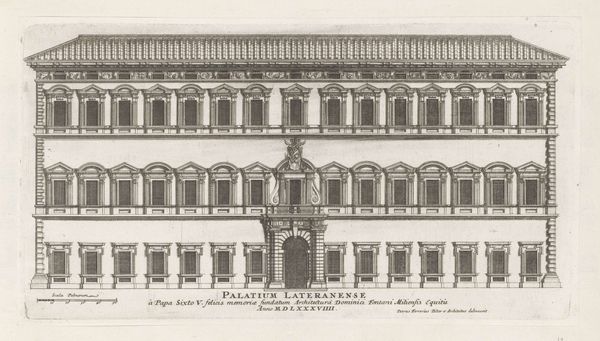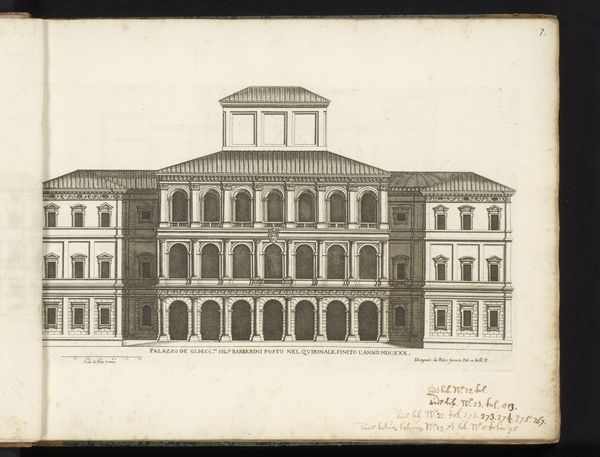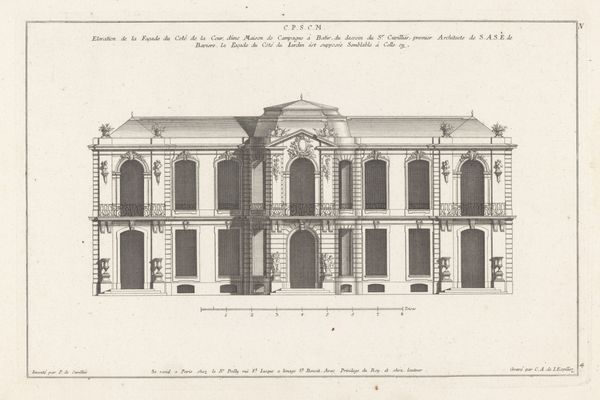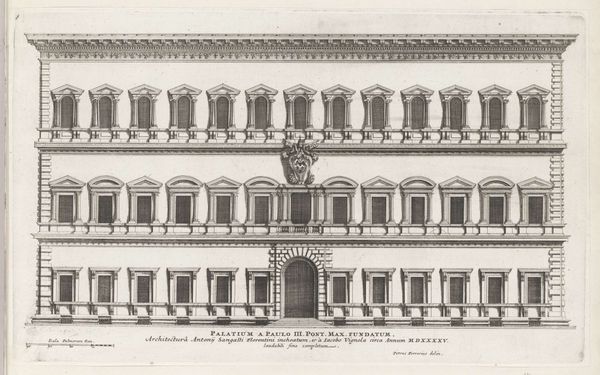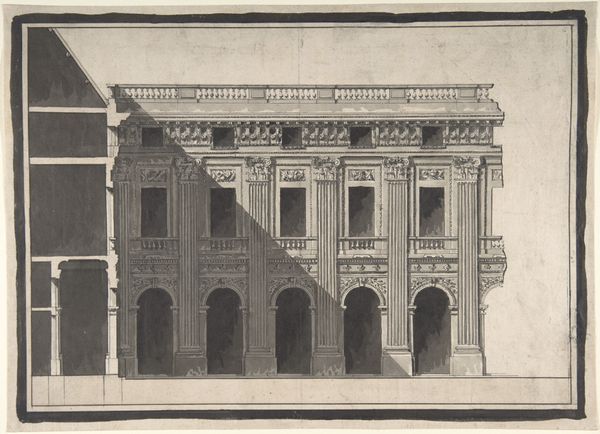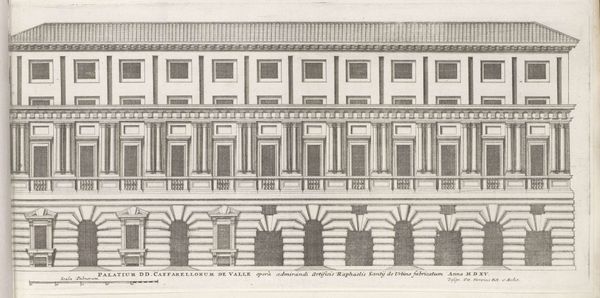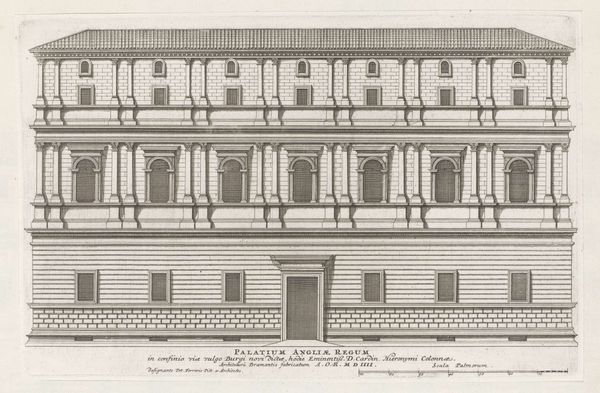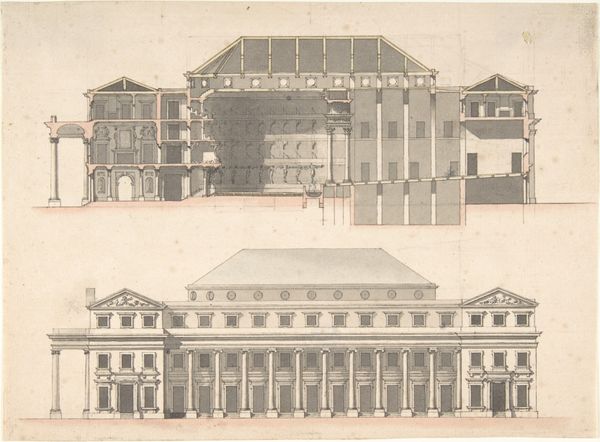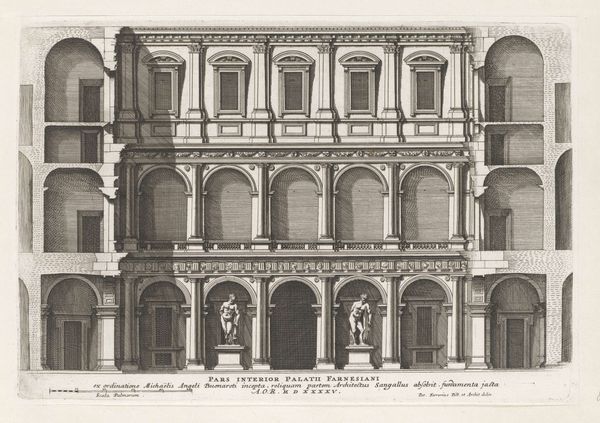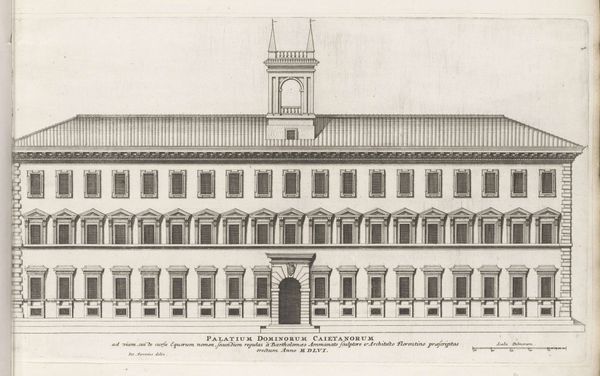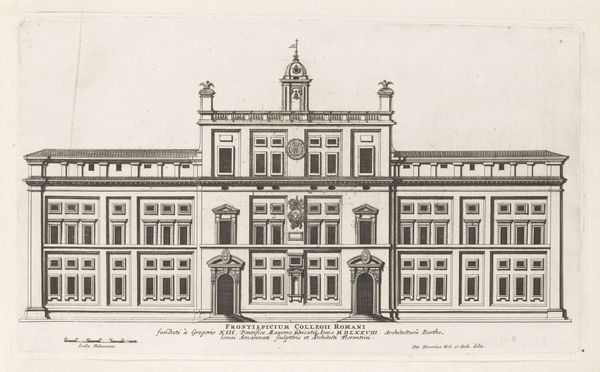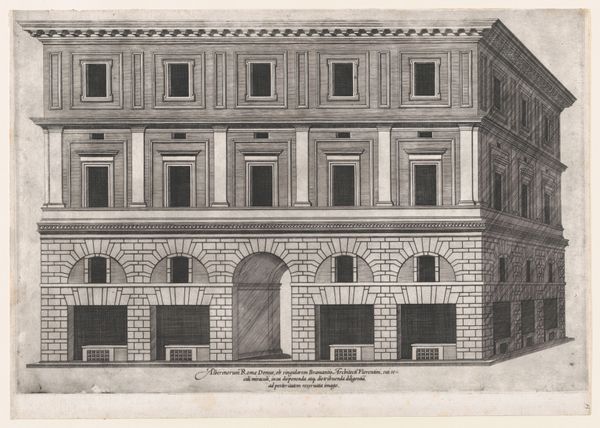
drawing, print, etching, engraving, architecture
#
drawing
#
baroque
# print
#
etching
#
landscape
#
engraving
#
architecture
Dimensions: height 247 mm, width 403 mm
Copyright: Rijks Museum: Open Domain
Curator: This meticulously detailed print shows the façade of the Palazzo Barberini in Rome, crafted around 1655 by Giovanni Battista Falda. It's a combination of etching and engraving on laid paper. Editor: It feels so static, almost like a stage set. The perfectly symmetrical façade and the stark lines project this overwhelming sense of authority. You can really sense the power this palace represents. Curator: Indeed, it's a statement of Baroque grandeur. Looking at the texture achieved through the engraving, you can really appreciate the craftsmanship. The consistent lines must have required meticulous work and an immense amount of labour. We must consider the economy involved in the printing and distribution. Who would buy it? And what was its function? Editor: Absolutely, consider also that architecture was not just about aesthetic choices. It’s about class. Palaces like this reinforced social hierarchies and solidified the Barberini family's influence. Did their workers have access to something even remotely resembling such luxury and craftsmanship? And what labor practices prevailed to achieve such perfection? Curator: Precisely, it becomes a lens to view 17th century socio-economic practices. The very production of these architectural prints served the purpose of distribution amongst wealthy families who would imitate them. Beyond artistry, consider the access to specialized paper, tools, and skill this etching demonstrates; such material privilege informed what we consider “high art.” Editor: Right, these images are not just documents, they were agents that participated actively in perpetuating power relations. Consider, also, what the architectural design itself conveys! Its visual language, meant to be read in relation to who was permitted in, and who wasn’t. Curator: This print presents more than the physical structure, it unveils a whole production ecosystem. Examining the materials of this etching expands our grasp of social hierarchies, access, and consumption in Baroque Rome. Editor: Yes, viewing Falda’s etching demands we analyze the relationship between its composition and the cultural values that underpinned Baroque society and politics. Hopefully, this lens promotes a better grasp of inequality. Curator: Indeed, by focusing on material culture, and on print-making practices, we learn something vital. Editor: By revealing how this image engages with structures of power, we highlight art’s social and political roles.
Comments
No comments
Be the first to comment and join the conversation on the ultimate creative platform.

